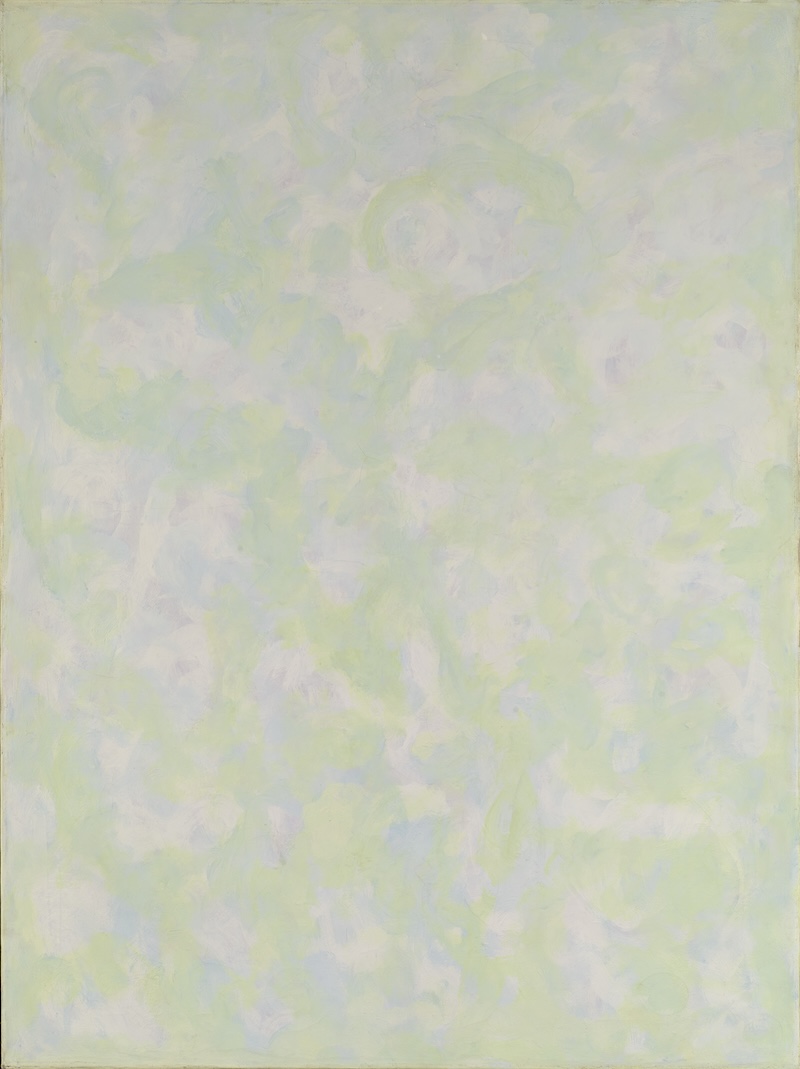Object of the Month: 'Untitled' by Beauford Delaney
By Bowdoin College Museum of ArtIn its subtle and quiet richness, Untitled (1960) by Beauford Delaney asks viewers to slow down and look closely.

“White” paintings—paintings that seem at first glance to withhold content from their monochromatic fields—reliably incite emotion. Be it a response of confusion, anger, or delight that they incite, these “plain paintings” are surprisingly provocative. Perhaps it’s because they seem to force the issue for seasoned art historians and casual museum-goers alike: who cares?
Untitled by Beauford Delaney certainly does not evade this question. Its standard rectangular frame, muted color palette, and lack of obvious cultural or religious signifiers beg the audience to question what intention or meaning is represented in the piece before them. A notorious critique of “white” paintings like this one is: “I could do that.” While I believe this reaction is understandable, it can also be limiting. You could do a lot of things, but you haven’t. What Beauford Delaney has done so masterfully with Untitled is to beckon us, his audience, to look more closely at his painting. As we do so, we peer more deeply within ourselves.
In responding to Delaney’s prompt to pause and to inspect more closely his painted canvas, you will find color. Lots of it! You will see rays of gold, pools of blue, and blossoms of pink. The impulse to critique and dismiss the unfamiliar has only accelerated in our digital age. Works like Untitled challenge us to slow down to glean what lies beneath the surface and to hold dearly to the gems we discover.
Born in Knoxville, Tennessee, Beauford Delaney (1901-79) is a renowned modern artist whose early career was shaped by the Harlem Renaissance. After garnering the admiration of American creatives like the writer James Baldwin and the painter Georgia O'Keeffe for his luminous cityscapes and portraits, Delaney ventured off to Paris, where he would spend the rest of his life. During his time in France, Delaney leaned more heavily into abstraction, producing lyrical canvases, like this one, that seem to wrestle with the very nature of color itself. A trailblazer in his own era, Delaney persevered despite the marginalization he endured due to race and sexual orientation. Through works such as Untitled, he persists in inviting us to engage, following his lead, with the exploration of themes such as spirituality, light, and personal identity.
Neiman Mocombe ’26